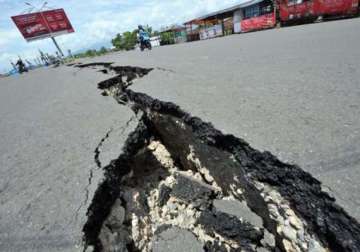New York: Monitoring subtle shifts in the Earth's offshore plates can provide accurate forecasts of earthquake magnitude and tsunami potential, says a study by an international team of scientists.
This geological phenomenon called “slow slip events” or silent earthquakes is a useful tool in identifying the precursors to major earthquakes and the resulting tsunamis, the findings showed.
“Giant earthquakes and tsunamis in the last decade - Sumatra in 2004 and Japan in 2011 - are a reminder that our ability to forecast these destructive events is painfully weak,” said Tim Dixon from University of South Florida.
Slow slip events have some similarities to earthquakes - caused by motion on faults - but release their energy slowly, over weeks or months, and cannot be felt or even recorded by conventional seismographs, Dixon said.
The scientists used high precision GPS to measure the slight shifts on a fault line in Costa Rica, and found that better monitoring of these small events can lead to better understanding of maximum earthquake size and tsunami risk.
They studied the Sep 5, 2012 earthquake on the Costa Rica subduction plate boundary, as well as motions of the Earth in the previous decade.
The 7.6-magnitude quake was one of the strongest earthquakes ever to hit the Central American nation and unleashed more than 1,600 aftershocks.
Marino Protti, one of the authors of the paper and a resident of Costa Rica, has spent more than two decades warning local populations of the likelihood of a major earthquake in their area and recommending enhanced building codes.
The study appeared in the journal Proceedings of the National Academies of Sciences.
Latest World News
